You have particular requirement which may be better served through the use of it's layout manager. This provides you the ability to control every aspect of the layout without the need to resort to hacks or "work arounds" which never quite work or have bizarre side effects

public class AccordionLayout implements LayoutManager {
// This "could" be controlled by constraints, but that would assume
// that more then one component could be expanded at a time
private Component expanded;
public void setExpanded(Component expanded) {
this.expanded = expanded;
}
public Component getExpanded() {
return expanded;
}
@Override
public void addLayoutComponent(String name, Component comp) {
}
@Override
public void removeLayoutComponent(Component comp) {
}
@Override
public Dimension preferredLayoutSize(Container parent) {
Dimension size = minimumLayoutSize(parent);
if (expanded != null) {
size.height -= expanded.getMinimumSize().height;
size.height += expanded.getPreferredSize().height;
}
return size;
}
@Override
public Dimension minimumLayoutSize(Container parent) {
int height = 0;
int width = 0;
for (Component comp : parent.getComponents()) {
width = Math.max(width, comp.getPreferredSize().width);
height += comp.getMinimumSize().height;
}
return new Dimension(width, height);
}
@Override
public void layoutContainer(Container parent) {
Insets insets = parent.getInsets();
int availableHeight = parent.getHeight() - (insets.top + insets.bottom);
int x = insets.left;
int y = insets.top;
int maxSize = 0;
Dimension minSize = minimumLayoutSize(parent);
if (expanded != null) {
minSize.height -= expanded.getMinimumSize().height;
// Try an honour the preferred size the expanded component...
maxSize = Math.max(expanded.getPreferredSize().height, availableHeight - minSize.height);
}
int width = parent.getWidth() - (insets.left + insets.right);
for (Component comp : parent.getComponents()) {
if (expanded != comp) {
comp.setSize(width, comp.getMinimumSize().height);
} else {
comp.setSize(width, maxSize);
}
comp.setLocation(x, y);
y += comp.getHeight();
}
}
}
And the runnable example...
This goes to the enth degree, creating a specialised component to act as each "fold", but this just reduces the complexity of the API from the outside, meaning, you just need to think about the title and the content and let the rest of the API take care of itself
import java.awt.BorderLayout;
import java.awt.Color;
import java.awt.Component;
import java.awt.Container;
import java.awt.Dimension;
import java.awt.EventQueue;
import java.awt.FlowLayout;
import java.awt.Insets;
import java.awt.LayoutManager;
import java.awt.event.MouseAdapter;
import java.awt.event.MouseEvent;
import javax.swing.JFrame;
import javax.swing.JLabel;
import javax.swing.JPanel;
import javax.swing.UIManager;
import javax.swing.UnsupportedLookAndFeelException;
import javax.swing.border.LineBorder;
public class Test {
public static void main(String[] args) {
new Test();
}
public Test() {
EventQueue.invokeLater(new Runnable() {
@Override
public void run() {
try {
UIManager.setLookAndFeel(UIManager.getSystemLookAndFeelClassName());
} catch (ClassNotFoundException | InstantiationException | IllegalAccessException | UnsupportedLookAndFeelException ex) {
ex.printStackTrace();
}
JFrame frame = new JFrame("Testing");
frame.setDefaultCloseOperation(JFrame.EXIT_ON_CLOSE);
frame.add(new TestPane());
frame.pack();
frame.setLocationRelativeTo(null);
frame.setVisible(true);
}
});
}
public class TestPane extends JPanel {
private AccordionLayout layout;
public TestPane() {
layout = new AccordionLayout();
setLayout(layout);
AccordionListener listener = new AccordionListener() {
@Override
public void accordionSelected(Component comp) {
layout.setExpanded(comp);
revalidate();
repaint();
}
};
Color colors[] = {Color.RED, Color.BLUE, Color.CYAN, Color.GREEN, Color.MAGENTA, Color.ORANGE, Color.PINK, Color.YELLOW};
String titles[] = {"Red", "Blue", "Cyan", "Green", "Magenta", "Orange", "Pink", "Yellow"};
for (int index = 0; index < colors.length; index++) {
AccordionPanel panel = new AccordionPanel(titles[index], new ContentPane(colors[index]));
panel.setAccordionListener(listener);
add(panel);
}
}
}
public class ContentPane extends JPanel {
public ContentPane(Color background) {
setBackground(background);
}
@Override
public Dimension getPreferredSize() {
return new Dimension(100, 100);
}
}
public interface AccordionListener {
public void accordionSelected(Component comp);
}
public class AccordionPanel extends JPanel {
private JLabel title;
private JPanel header;
private Component content;
private AccordionListener accordionListener;
public AccordionPanel() {
setLayout(new BorderLayout());
title = new JLabel("Title");
header = new JPanel(new FlowLayout(FlowLayout.LEADING));
header.setBackground(Color.GRAY);
header.setBorder(new LineBorder(Color.BLACK));
header.add(title);
add(header, BorderLayout.NORTH);
header.addMouseListener(new MouseAdapter() {
@Override
public void mouseClicked(MouseEvent e) {
AccordionListener listener = getAccordionListener();
if (listener != null) {
listener.accordionSelected(AccordionPanel.this);
}
}
});
}
public AccordionPanel(String title) {
this();
setTitle(title);
}
public AccordionPanel(String title, Component content) {
this(title);
setContentPane(content);
}
public void setAccordionListener(AccordionListener accordionListener) {
this.accordionListener = accordionListener;
}
public AccordionListener getAccordionListener() {
return accordionListener;
}
public void setTitle(String text) {
title.setText(text);
revalidate();
}
public String getText() {
return title.getText();
}
public void setContentPane(Component content) {
if (this.content != null) {
remove(this.content);
}
this.content = content;
if (this.content != null) {
add(this.content);
}
revalidate();
}
public Component getContent() {
return content;
}
@Override
public Dimension getMinimumSize() {
return header.getPreferredSize();
}
@Override
public Dimension getPreferredSize() {
Dimension size = content != null ? content.getPreferredSize() : super.getPreferredSize();
Dimension min = getMinimumSize();
size.width = Math.max(min.width, size.width);
size.height += min.height;
return size;
}
}
public class AccordionLayout implements LayoutManager {
// This "could" be controled by constraints, but that would assume
// that more then one component could be expanded at a time
private Component expanded;
public void setExpanded(Component expanded) {
this.expanded = expanded;
}
public Component getExpanded() {
return expanded;
}
@Override
public void addLayoutComponent(String name, Component comp) {
}
@Override
public void removeLayoutComponent(Component comp) {
}
@Override
public Dimension preferredLayoutSize(Container parent) {
Dimension size = minimumLayoutSize(parent);
if (expanded != null) {
size.height -= expanded.getMinimumSize().height;
size.height += expanded.getPreferredSize().height;
}
return size;
}
@Override
public Dimension minimumLayoutSize(Container parent) {
int height = 0;
int width = 0;
for (Component comp : parent.getComponents()) {
width = Math.max(width, comp.getPreferredSize().width);
height += comp.getMinimumSize().height;
}
return new Dimension(width, height);
}
@Override
public void layoutContainer(Container parent) {
Insets insets = parent.getInsets();
int availableHeight = parent.getHeight() - (insets.top + insets.bottom);
int x = insets.left;
int y = insets.top;
int maxSize = 0;
Dimension minSize = minimumLayoutSize(parent);
if (expanded != null) {
minSize.height -= expanded.getMinimumSize().height;
// Try an honour the preferred size the expanded component...
maxSize = Math.max(expanded.getPreferredSize().height, availableHeight - minSize.height);
}
int width = parent.getWidth() - (insets.left + insets.right);
for (Component comp : parent.getComponents()) {
if (expanded != comp) {
comp.setSize(width, comp.getMinimumSize().height);
} else {
comp.setSize(width, maxSize);
}
comp.setLocation(x, y);
y += comp.getHeight();
}
}
}
}
Now, if you're really up for a challenge, you could use something a animated layout proxy and do something like...



